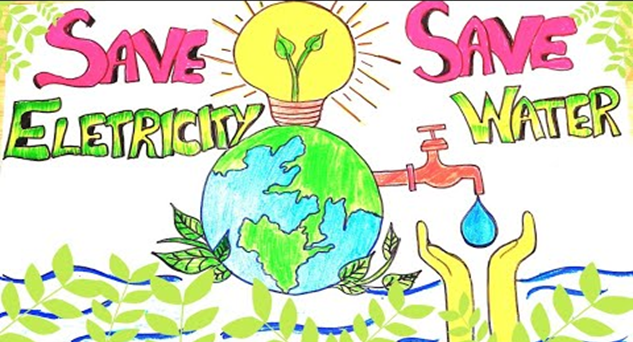Simple Ways to Save Water and Electricity at Home
Saving water and electricity at home helps reduce utility bills and supports environmental sustainability. Simple habits like fixing leaks, turning off taps and lights when not in use, and using energy-efficient appliances can make a big difference. Installing low-flow fixtures, harvesting rainwater, and utilizing natural light further conserves resources. Smart home technology and educating family members enhance efficiency and long-term savings. Small daily actions collectively lead to a greener and more sustainable future.
Introduction
Saving water and electricity at home is not just about cutting utility bills—it’s also about contributing to a sustainable environment. Small, everyday habits can lead to significant savings in resources and help reduce your carbon footprint. With growing concerns about climate change and resource depletion, it's important for everyone to take responsibility for conserving these vital resources.
This blog explores simple yet effective ways to save water and electricity at home. By adopting these measures, you can make your home eco-friendly while reducing unnecessary waste.
Fix Leaks and Drips
A dripping faucet or leaking pipe can waste gallons of water every day. Regularly inspect taps, pipes, and toilets for any signs of leakage and fix them immediately. Even a small leak can result in a significant loss of water over time.
By addressing leaks promptly, you not only conserve water but also prevent potential water damage to your home. Investing in good-quality plumbing materials ensures long-term savings and reliability.
Turn Off Taps While Not in Use
One of the easiest ways to save water is by turning off taps when they are not in use. For instance, don’t leave the water running while brushing your teeth, shaving, or washing dishes.
This simple habit can save liters of water every day. Educate family members about the importance of conserving water during such activities, as small changes collectively make a big difference.
Install Low-Flow Fixtures
Low-flow faucets, showerheads, and toilets are designed to use significantly less water without compromising performance. These fixtures reduce water consumption by limiting flow rates while maintaining efficiency.
Installing such devices is a cost-effective solution to conserve water in the long term. They are widely available and easy to install, making them a practical choice for any household.
Use Energy-Efficient Appliances
Energy-efficient appliances, such as refrigerators, washing machines, and air conditioners with high energy star ratings, consume less electricity compared to conventional models. While these appliances may have a higher initial cost, they lead to significant energy savings over time.
Switching to energy-efficient options not only reduces your electricity bills but also minimizes the environmental impact caused by excessive energy consumption.
Switch Off Unused Lights and Electronics
Leaving lights, fans, and electronic devices on when not in use is a common habit that leads to unnecessary energy consumption. Make it a rule to switch off lights and unplug appliances when leaving a room.
Using power strips can help you turn off multiple devices with a single switch. This practice not only saves electricity but also increases the lifespan of your appliances.
Use LED Bulbs
Replacing traditional incandescent bulbs with LED bulbs is a simple and effective way to save electricity. LED bulbs consume up to 80% less energy and last significantly longer, making them a cost-effective and environmentally friendly choice.
They also emit less heat, reducing the cooling load on air conditioners during hot weather. By making this small change, you can reduce both energy consumption and electricity bills.
Use Natural Light and Ventilation
Make the most of natural light during the day by opening curtains and windows. Proper ventilation reduces the need for artificial cooling and lighting, helping you save electricity.
Position furniture and workspaces to maximize exposure to natural light, and consider installing skylights in rooms with limited access to daylight. This simple habit enhances comfort and reduces dependency on electrical devices.
Operate Appliances Wisely
Operate washing machines, dishwashers, and other appliances only when they are fully loaded. Partial loads waste both water and electricity.
Additionally, use cold water cycles for laundry whenever possible, as heating water consumes a significant amount of energy. Properly maintain appliances to ensure they operate efficiently and avoid unnecessary energy loss.
Harvest Rainwater
Rainwater harvesting is an excellent way to conserve water. By installing rain barrels or a rainwater collection system, you can use collected water for gardening, cleaning, or other non-potable purposes.
This practice reduces dependency on municipal water supply and ensures efficient use of natural resources. It’s a practical solution for areas facing water scarcity.
Use Smart Home Technology
Smart home devices like programmable thermostats, motion-sensor lights, and energy monitoring systems help you control and optimize energy use.
For example, a smart thermostat can adjust the temperature automatically based on your schedule, reducing energy wastage. Investing in such technologies can lead to substantial savings while enhancing convenience.
Educate and Involve Family Members
Water and electricity conservation require collective effort. Teach family members, especially children, the importance of saving resources and involve them in daily conservation practices.
Simple steps like turning off lights, using water sparingly, and closing refrigerator doors properly can make a big difference when followed consistently by everyone in the household.
Conclusion
Conserving water and electricity at home is a shared responsibility that benefits both the environment and your wallet. By adopting simple habits like fixing leaks, switching to energy-efficient appliances, and using natural resources wisely, you can make a positive impact.
Start small, stay consistent, and encourage others to join you in building a sustainable future. Together, these efforts will lead to significant savings and a healthier planet.
.png)






Leave a Comment
Your email address will not be published. Required fields are marked *